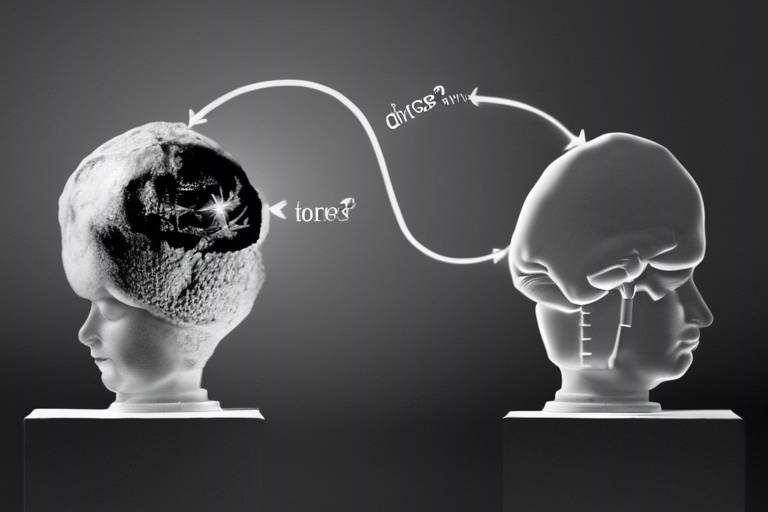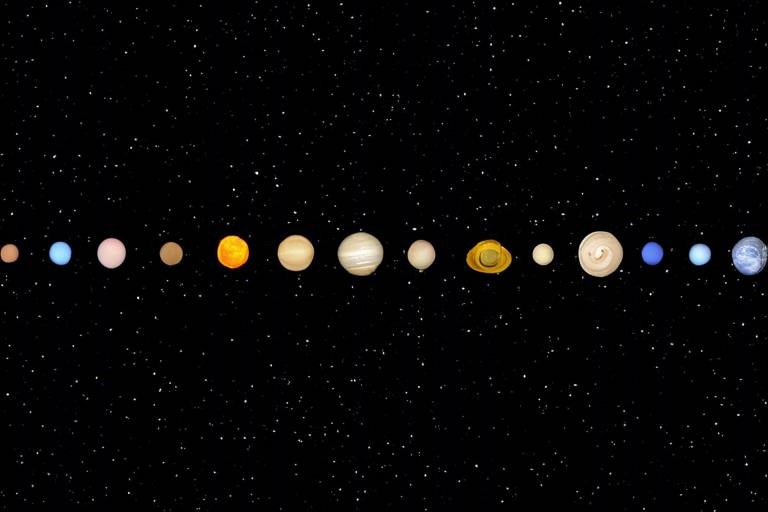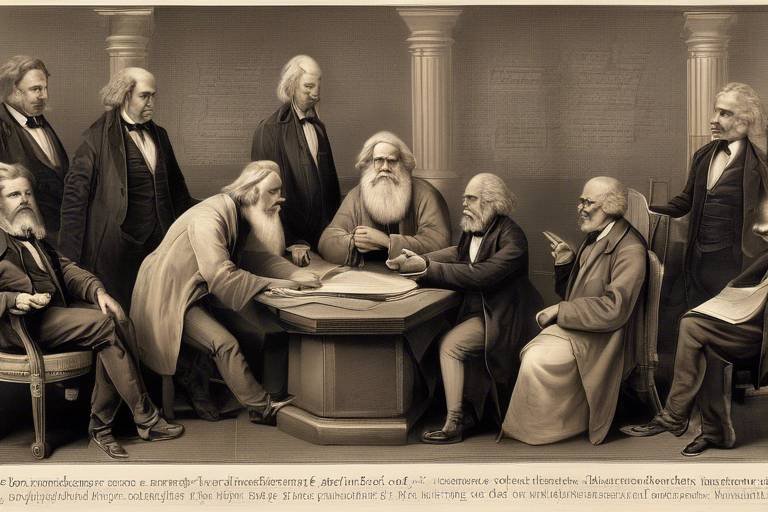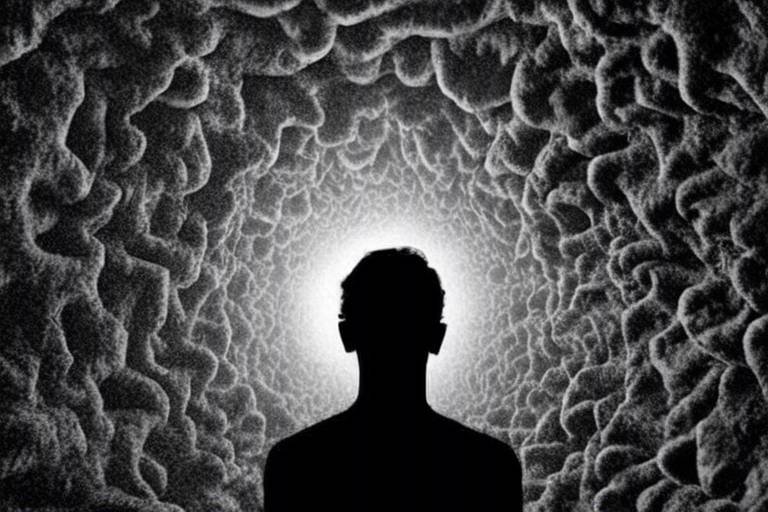Connecting Halley’s Comet, Philosophy, and Science
Have you ever looked up at the night sky and wondered about the mysteries that lie beyond our planet? Halley’s Comet, a celestial wanderer that graces our skies approximately every 76 years, is not just a spectacle; it is a profound symbol that intertwines the realms of philosophy and science. This magnificent comet serves as a bridge between the empirical inquiries of science and the existential musings of philosophy, igniting curiosity and inspiring generations of thinkers. As we explore the intricate relationships between Halley’s Comet, philosophical inquiry, and scientific discovery, we uncover how a single celestial event can spark a cascade of intellectual thought and empirical investigation.
Throughout history, Halley’s Comet has captured the imagination of astronomers and philosophers alike. Its periodic appearances have not only advanced our understanding of the cosmos but have also prompted deep reflections on our place within it. Imagine standing in a field, gazing up at the comet's luminous tail, and feeling a sense of connection to the universe. This experience is a reminder that while science seeks to quantify and explain, philosophy encourages us to ponder the implications of our existence in a vast, often incomprehensible universe.
The comet's historical significance is profound. From ancient civilizations interpreting its appearance as a harbinger of doom to modern scientists studying its composition and trajectory, Halley’s Comet has been a catalyst for both scientific advancements and philosophical discourse. Each return of the comet has been met with awe and wonder, leading to questions such as: What does it mean to be human in the face of such grandeur? How do we reconcile our fleeting existence with the timelessness of the cosmos? These questions are not merely academic; they resonate with our deepest fears and aspirations.
As we delve deeper into the connection between Halley’s Comet, philosophy, and science, we can see how this celestial phenomenon has shaped our understanding of the universe. The comet is a reminder that the boundaries between science and philosophy are often blurred. For instance, the study of Halley’s Comet has led to significant discoveries in astronomy, including insights into the composition of comets and the mechanics of our solar system. Yet, it also compels us to reflect on the philosophical implications of these discoveries: What does it mean for our understanding of life beyond Earth? Are we alone in the universe, or is there more to explore?
In summary, Halley’s Comet is not just an astronomical phenomenon; it is a profound intersection of science and philosophy. It challenges us to look beyond the empirical data and consider the broader implications of our discoveries. As we continue to observe the comet and study its mysteries, we also engage in a timeless dialogue about existence, purpose, and our place in the cosmos. So the next time you gaze at the night sky and see Halley’s Comet, remember that it is more than just a beautiful sight; it is a call to reflect on the wonders of the universe and the mysteries of our own existence.
- What is Halley’s Comet? Halley’s Comet is a periodic comet visible from Earth approximately every 76 years, known for its bright appearance and long tail.
- When will Halley's Comet be visible next? Halley's Comet is expected to return in 2061, providing a spectacular view for those who observe it.
- What are the scientific discoveries linked to Halley’s Comet? The study of Halley’s Comet has led to advancements in our understanding of comets, their compositions, and the dynamics of the solar system.
- How has Halley’s Comet influenced philosophical thought? The comet has prompted existential questions about humanity's place in the universe, encouraging philosophical inquiry into life, purpose, and existence.

The Historical Significance of Halley’s Comet
Halley’s Comet has been a celestial spectacle that has captured the human imagination for centuries. Its periodic appearances, roughly every 76 years, have not only provided a canvas for scientific inquiry but have also woven themselves into the very fabric of cultural narratives across different civilizations. From ancient times to the modern era, this comet has served as a harbinger of change, wonder, and sometimes even fear. The significance of Halley’s Comet transcends mere astronomy; it intertwines with our understanding of time, destiny, and the universe itself.
Historically, Halley’s Comet has been recorded as far back as 240 BC, with its appearances noted in various ancient texts. The comet's return in 1066 was famously depicted in the Bayeux Tapestry, where it was interpreted as a portent of the Norman Conquest of England. This event illustrates how celestial phenomena have been used to explain and predict earthly events, often reflecting the cultural beliefs and superstitions of the time. The comet's visibility has sparked both awe and dread, influencing everything from literature to art, and even political movements.
As we delve deeper into the historical significance of Halley’s Comet, we can see how it has been perceived differently across cultures. For instance, in Chinese astronomy, the comet was seen as a symbol of change and was often linked to the fortunes of the emperor. In contrast, European interpretations frequently associated it with omens of disaster or significant upheaval. This divergence in understanding highlights the powerful role that Halley’s Comet has played in shaping human thought and cultural identity.
Moreover, the comet has also influenced scientific exploration and inquiry. Each return has provided astronomers with a unique opportunity to study not just the comet itself, but also the evolution of our understanding of the cosmos. The 1910 appearance of Halley’s Comet was particularly notable, as it coincided with the advent of new astronomical technologies, allowing scientists to gather data that would pave the way for modern astrophysics. This intersection of historical significance and scientific discovery underscores the comet's role as a bridge between human curiosity and empirical investigation.
In summary, Halley’s Comet is much more than a periodic visitor in our skies; it is a symbol of humanity’s quest for knowledge and understanding. Its historical significance lies not only in its astronomical properties but also in its capacity to inspire philosophical inquiry and cultural reflection. As we continue to gaze at the stars, Halley’s Comet remains a shining testament to our enduring fascination with the universe.

Philosophical Implications of Celestial Events
When we gaze up at the night sky and catch a glimpse of a celestial wonder like Halley’s Comet, it's impossible not to feel a sense of awe and introspection. These moments compel us to ponder profound questions about our existence, the nature of time, and our place in the vast universe. Celestial events are more than just astronomical phenomena; they are catalysts for deep philosophical inquiry. They invite us to explore concepts that have puzzled humanity for centuries, such as:
- What does it mean to exist in such a grand cosmos?
- How do we measure time in relation to the universe's infinite expanse?
- Are we merely observers, or do we play a part in a larger cosmic narrative?
Throughout history, philosophers have used celestial events as a backdrop for their musings. For instance, the appearance of Halley’s Comet has sparked discussions about determinism and free will. Some argue that such predictable events suggest a universe governed by laws, while others contend that human experience and choice still hold significance in the grand scheme of things. This tension between determinism and free will is a classic philosophical dilemma that continues to resonate today.
Moreover, the periodic return of Halley’s Comet serves as a reminder of the transience of life. Every 76 years, it graces our skies, only to vanish again, much like our own lives and the fleeting moments we cherish. This cyclical nature prompts us to reflect on our own mortality and the legacies we leave behind. Are we making the most of our time? Are we contributing to something greater than ourselves? These questions echo through the ages, urging us to contemplate our individual and collective existence.
Additionally, celestial events challenge our understanding of time. In a world where everything seems to move at lightning speed, the slow, deliberate journey of Halley’s Comet across the sky reminds us that some things take time to unfold. This raises intriguing questions about how we perceive time itself. Is it an objective measure, or is it shaped by our experiences and emotions? The comet's return invites us to consider the philosophical concept of time as both a linear progression and a cyclical loop.
In contemporary philosophy, Halley’s Comet often serves as a metaphor for existential inquiry. Thinkers explore how such celestial events can mirror our search for meaning and purpose. Just as the comet traverses the cosmos, we, too, embark on our own journeys, searching for significance in a seemingly indifferent universe. This connection between the cosmos and human experience highlights the importance of philosophical discourse in understanding our place in the universe.
Ultimately, the philosophical implications of celestial events like Halley’s Comet extend far beyond the realm of astronomy. They invite us to engage in a dialogue about existence, time, and our role in the cosmos. As we contemplate these grand questions, we are reminded that the universe is not just a backdrop for our lives but a profound source of inspiration and inquiry. So, the next time you find yourself gazing at the night sky, take a moment to reflect on the deeper meanings woven into the fabric of the cosmos.
- What is Halley’s Comet?
Halley’s Comet is a periodic comet that is visible from Earth approximately every 76 years. Its last appearance was in 1986, and it is expected to return in 2061. - Why are celestial events significant in philosophy?
Celestial events prompt us to consider profound questions about existence, time, and our place in the universe, serving as catalysts for philosophical exploration. - How has Halley’s Comet influenced scientific thought?
The study of Halley’s Comet has led to significant advancements in astronomy, including our understanding of cometary behavior and the nature of our solar system. - What philosophical questions does Halley’s Comet raise?
It raises questions about determinism vs. free will, the nature of time, and the existential significance of our lives in relation to the cosmos.

Cosmology and Human Understanding
When we gaze up at the night sky and catch a glimpse of Halley’s Comet, we are not merely observing a celestial object; we are peering into the vastness of the universe and our place within it. This cosmic wanderer, with its brilliant tail and periodic appearances, has sparked profound questions about existence, time, and the very nature of our reality. Each return of Halley’s Comet serves as a reminder of the transience of life and the continuity of cosmic cycles, prompting us to reflect on our own existence as fleeting beings in an ever-expanding universe.
The study of Halley’s Comet has led to significant advancements in our understanding of cosmology. As we track its trajectory and analyze its composition, we gain insights into the origins of our solar system and the fundamental laws that govern celestial bodies. The comet acts as a cosmic time capsule, preserving information from the early days of the solar system, allowing scientists to piece together the puzzle of our cosmic heritage. It challenges us to think about the interconnectedness of all things and how our individual lives are woven into the fabric of the universe.
Moreover, Halley’s Comet invites us to ponder the philosophical implications of our discoveries. As we uncover the secrets of the cosmos, we are faced with questions that transcend empirical data. For instance, how does the knowledge of such celestial events impact our understanding of humanity’s role in the universe? Are we mere observers, or do we have a responsibility to protect and understand the cosmos? These questions echo through the halls of philosophical discourse, reminding us that while science provides answers, it also opens the door to deeper inquiries about meaning and purpose.
To illustrate the complex relationship between cosmology and human understanding, consider the following table that summarizes key insights gained from studying Halley’s Comet:
| Aspect | Insight |
|---|---|
| Origin of the Solar System | Comets like Halley’s provide clues about the early solar system's formation and evolution. |
| Cosmic Cycles | The periodic return of Halley’s Comet illustrates the predictable patterns of celestial mechanics. |
| Human Reflection | Halley’s Comet prompts us to reflect on our place in the universe and the nature of existence. |
As we continue to study Halley’s Comet and other celestial phenomena, we are reminded that the quest for knowledge is not just about gathering data; it is also about understanding our place in the cosmos. Each observation, each hypothesis, and each philosophical inquiry brings us one step closer to comprehending the vast tapestry of existence. The dance of Halley’s Comet across the night sky is not just a spectacle; it is a profound reminder of the questions that have lingered in human thought for centuries, urging us to explore not just the universe, but also the depths of our own understanding.
- What is Halley’s Comet? Halley’s Comet is a periodic comet that is visible from Earth approximately every 76 years. It is named after the astronomer Edmond Halley, who calculated its orbit.
- Why is Halley’s Comet significant in cosmology? Halley’s Comet provides insights into the early solar system and the processes that govern celestial bodies, making it a valuable subject of study in cosmology.
- How does Halley’s Comet influence philosophical thought? The appearances of Halley’s Comet prompt questions about existence, humanity's place in the universe, and the nature of time, leading to rich philosophical discussions.
- When will Halley’s Comet next be visible? Halley’s Comet is expected to return in 2061, providing another opportunity for observation and study.

Historical Perspectives on Halley’s Comet
Throughout history, Halley’s Comet has been more than just a celestial object; it has been a profound symbol that has captured the imagination of countless civilizations. The comet, named after the astronomer Edmond Halley, who successfully predicted its return in 1705, has been observed and recorded as far back as 240 BC. Each appearance of Halley’s Comet has not only marked a significant event in the sky but has also been intertwined with the cultural and scientific narratives of the time.
In ancient cultures, Halley’s Comet was often seen as an omen, predicting everything from great disasters to the rise of new leaders. For instance, during its appearance in 1066, it was famously depicted on the Bayeux Tapestry, an artistic representation of the Norman Conquest of England. The comet was interpreted as a harbinger of change, signaling the upheaval that was about to unfold. This illustrates how celestial events can shape human history and perception.
As we move through the ages, the interpretations of Halley’s Comet have evolved. In the Middle Ages, its appearances were often linked to religious significance, viewed as divine messages or warnings from God. The comet's visibility was a source of both fear and awe, leading to a blend of superstition and fascination that characterized the era. Scholars and theologians would debate the implications of its return, demonstrating how deeply intertwined astronomy and philosophy were during this period.
In contrast, the Renaissance marked a shift in perspective as scientific inquiry began to flourish. Figures like Tycho Brahe and later Isaac Newton contributed to a more empirical understanding of Halley’s Comet. Their studies laid the groundwork for a more systematic approach to celestial phenomena, moving away from mythological interpretations towards a framework grounded in observation and mathematics. This shift not only changed how we viewed Halley’s Comet but also how we approached the cosmos as a whole.
Fast forward to the 20th century, and Halley’s Comet became a focal point for modern astronomy. The 1986 return of the comet was particularly significant, as it was the first time it was studied by spacecraft. The European Space Agency and other organizations sent missions to gather data, allowing scientists to analyze its composition and behavior up close. This marked a monumental leap in our understanding, showcasing how Halley’s Comet has continuously served as a bridge between historical curiosity and modern science.
In summary, Halley’s Comet has not only been a remarkable astronomical body but also a profound catalyst for human thought and cultural evolution. Its historical significance is a testament to our enduring quest to understand the universe and our place within it. Each appearance of the comet has inspired both wonder and inquiry, prompting us to reflect on the interconnectedness of our existence and the cosmos.
- What is Halley’s Comet? Halley’s Comet is a periodic comet that orbits the Sun approximately every 76 years, known for its bright appearance and long tail.
- Why is it significant? Its historical appearances have influenced cultural narratives and scientific understanding, serving as a bridge between ancient beliefs and modern science.
- When can we see Halley’s Comet next? The next predicted appearance of Halley’s Comet is in 2061.
- How did ancient cultures interpret Halley’s Comet? Many ancient civilizations viewed it as an omen or a divine message, often predicting significant events.

Modern Philosophical Views
In the realm of contemporary philosophy, Halley’s Comet transcends its identity as merely a celestial body; it becomes a powerful metaphor for existential inquiry. Modern thinkers often use the comet's periodic appearances to provoke deep reflections on life, purpose, and our place in the cosmos. Just as Halley’s Comet reappears every 76 years, so too do the questions of existence and meaning resurface in our minds, inviting us to ponder the transitory nature of life itself.
Consider this: when we gaze at Halley’s Comet streaking across the night sky, we are not just observing a physical phenomenon; we are engaging with a symbol that challenges our understanding of time and existence. The comet prompts us to ask questions like, "What does it mean to be human in such a vast universe?" or "How do our lives fit into the grand tapestry of cosmic events?" This interplay between the celestial and the philosophical is where modern discourse flourishes.
Philosophers today often draw parallels between the comet and the concept of impermanence. Just as the comet's appearance is fleeting, so are our moments in life. This realization can lead to a profound appreciation for the present. For instance, existentialists might argue that recognizing our own transience encourages us to live more authentically, embracing each moment with intention and purpose. In this way, Halley’s Comet becomes a catalyst for introspection, urging us to confront our mortality and the significance of our choices.
Moreover, the comet serves as a reminder of humanity's insatiable curiosity. Our desire to understand the universe is mirrored in our quest for knowledge about ourselves. The philosophical inquiries inspired by Halley’s Comet resonate with a broader human experience—one that seeks to uncover truths about existence, ethics, and our interconnectedness with the universe. The comet's journey can be seen as a reflection of our own journeys, filled with exploration, discovery, and the occasional existential crisis.
In essence, Halley’s Comet is not just a scientific marvel; it is a philosophical touchstone that encourages us to grapple with the big questions of life. Its appearances remind us that while the universe may be vast and indifferent, our thoughts and reflections can be profound and meaningful. Just as the comet has been a source of fascination for centuries, it continues to inspire modern philosophical thought, inviting us to explore the depths of our existence and the mysteries that lie beyond the stars.
- What is Halley’s Comet? Halley's Comet is a periodic comet that orbits the Sun approximately every 76 years, known for its bright appearance and long tail.
- Why is Halley’s Comet significant in philosophy? It serves as a metaphor for existential inquiry, prompting questions about life, purpose, and humanity's place in the universe.
- How does Halley’s Comet influence scientific discovery? Its appearances have led to advancements in astronomy and a deeper understanding of celestial phenomena.
- What philosophical themes are associated with Halley’s Comet? Themes of impermanence, curiosity, and the search for meaning are commonly explored in relation to the comet.

Scientific Discoveries Linked to Halley’s Comet
Halley’s Comet, with its mesmerizing tail and periodic appearances, has not only captivated the imaginations of stargazers but has also spurred significant scientific discoveries throughout history. The comet, named after the astronomer Edmond Halley, who correctly predicted its return in 1705, serves as a profound example of how celestial phenomena can influence scientific inquiry and advancements. Each time Halley’s Comet graces our skies, it offers a unique opportunity for scientists to engage in empirical research, leading to breakthroughs in our understanding of the universe.
One of the most notable scientific discoveries linked to Halley’s Comet is related to the composition of comets and their behavior. In the late 20th century, the Giotto spacecraft made a historic flyby of Halley’s Comet in 1986, providing invaluable data about its nucleus and the materials that compose it. The mission revealed that Halley’s Comet is primarily made up of water ice, dust, and various organic compounds. This discovery has profound implications for our understanding of the origins of water and organic materials on Earth, suggesting that comets may have played a crucial role in delivering these essential components for life.
Furthermore, Halley’s Comet has been instrumental in advancing our knowledge of orbital mechanics. By studying the comet's trajectory and gravitational interactions with other celestial bodies, astronomers have refined their models of how objects move in space. This has led to improved predictions of comet paths and a better understanding of the dynamics of our solar system. The comet’s predictable return every 76 years allows scientists to test and validate theories of gravitational physics, making it a vital reference point in the field of astronomy.
In addition to its physical properties, Halley’s Comet has also contributed to the field of astrophysics. The study of its coma—the cloud of gas and dust surrounding the nucleus—has provided insights into the processes that occur when a comet approaches the Sun. As the comet heats up, volatile materials are released, creating a spectacular display that can be observed from Earth. This phenomenon has led to a deeper understanding of how comets interact with solar radiation and the implications for other celestial bodies.
Moreover, Halley’s Comet has served as a catalyst for the development of new technologies in space exploration. The challenges faced during the Giotto mission led to advancements in spacecraft design, navigation, and data collection methods. These innovations have not only enhanced our ability to study comets but have also been applied to other missions exploring distant planets and asteroids. The lessons learned from Halley’s Comet continue to shape the future of space exploration.
To summarize, the scientific discoveries linked to Halley’s Comet are as vast and varied as the stars themselves. From understanding the fundamental building blocks of life to refining our models of the cosmos, Halley’s Comet stands as a testament to the enduring relationship between celestial events and scientific progress. It invites us to look up at the night sky and ponder the mysteries of the universe, reminding us that there is always more to learn.
- What is Halley’s Comet? Halley’s Comet is a periodic comet that appears approximately every 76 years, named after the astronomer Edmond Halley.
- When will Halley’s Comet next be visible? Halley’s Comet is expected to return in 2061.
- What did the Giotto spacecraft discover about Halley’s Comet? The Giotto spacecraft discovered that Halley’s Comet is composed mainly of water ice, dust, and organic compounds.
- Why is Halley’s Comet important for science? Halley’s Comet has contributed to advancements in our understanding of comets, orbital mechanics, astrophysics, and space exploration technology.
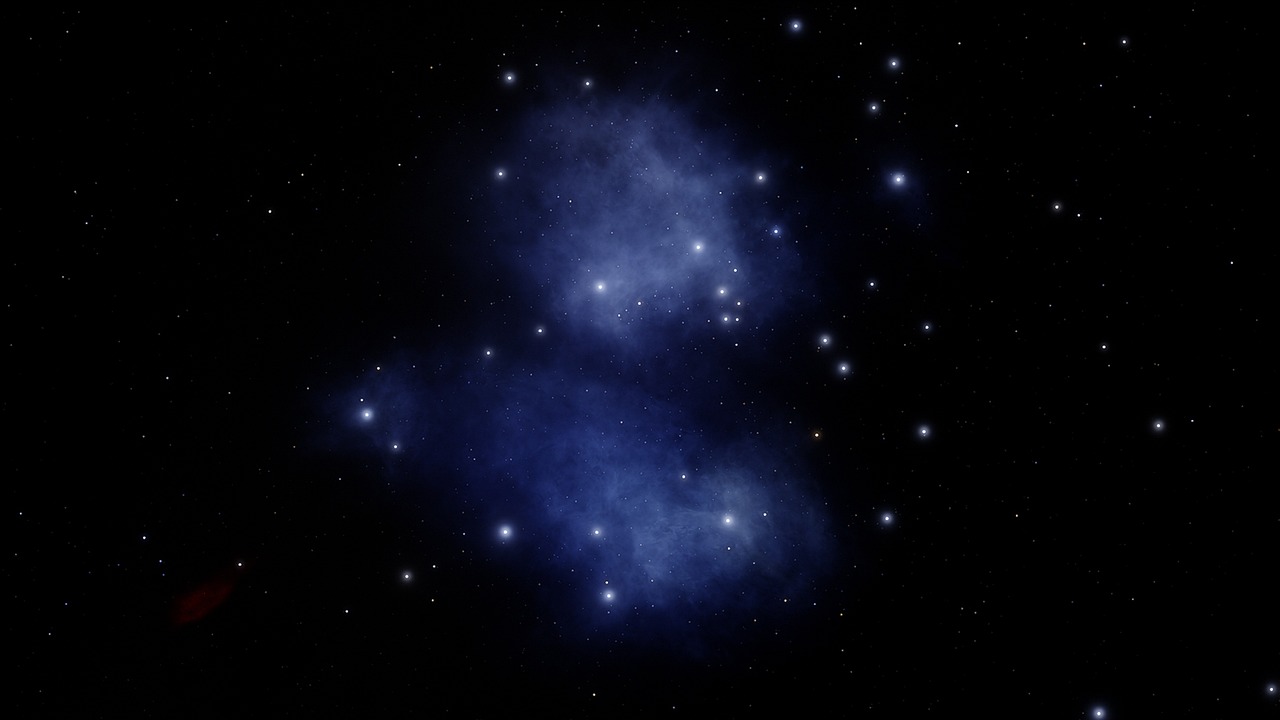
The Intersection of Science and Philosophy
When we think about the vastness of the universe, it's hard not to feel a sense of wonder. Halley’s Comet, with its dazzling tail and periodic appearances, serves as a perfect example of how science and philosophy can intertwine. Science seeks to understand the mechanics of the cosmos, while philosophy delves into the implications of our discoveries. This intersection is not just an academic exercise; it's a profound exploration of what it means to be human in a universe that is both beautiful and mysterious.
Science often provides us with the tools to explore the universe, but it is philosophy that asks the big questions: What does it mean to exist? How do we know what we know? For instance, when Halley’s Comet reappears, scientists gather data to understand its composition and trajectory. However, philosophers ponder the significance of this event: Does the comet symbolize the fleeting nature of life? What does its predictable return say about the nature of time and existence? This duality of inquiry enriches our understanding and appreciation of both fields.
Moreover, the study of Halley’s Comet exemplifies how scientific inquiry can lead to philosophical reflection. Take, for example, the scientific method—a systematic approach to investigation that relies on observation and experimentation. As scientists study the comet’s orbit and behavior, they inevitably confront questions of uncertainty and knowledge. What can we truly know about celestial bodies? This inquiry leads us to consider the limitations of human understanding, a classic philosophical theme.
To further illustrate this intersection, let’s consider a few key points:
- Scientific Inquiry: The methods used to study Halley’s Comet involve rigorous observation and data collection, showcasing the scientific approach.
- Philosophical Reflection: Each return of the comet invites us to reflect on our place in the universe, prompting questions about existence and purpose.
- Ethical Considerations: As we explore these celestial phenomena, ethical questions arise regarding our responsibilities as stewards of knowledge and the universe.
The relationship between science and philosophy is not always straightforward. Sometimes, scientific discoveries challenge established philosophical ideas. For example, the predictable nature of Halley’s Comet contradicts earlier superstitions that viewed it as an omen. This shift from superstition to scientific understanding illustrates how our worldview evolves over time, influenced by both empirical evidence and philosophical discourse.
Ultimately, the study of Halley’s Comet serves as a bridge between the empirical and the existential. It reminds us that while we can measure its distance and velocity, we must also grapple with the deeper meanings of its existence. The comet becomes not just a celestial object to study, but a symbol of humanity’s quest for knowledge and understanding. As we gaze upon its trail across the sky, we are reminded of our place in the cosmos and the eternal questions that drive our search for meaning.
- What is Halley’s Comet? Halley’s Comet is a periodic comet that is visible from Earth approximately every 76 years, making it one of the most famous comets.
- How does Halley’s Comet relate to philosophy? The appearances of Halley’s Comet prompt philosophical inquiries about existence, time, and humanity’s place in the universe.
- What role does science play in studying Halley’s Comet? Science provides the methods and tools necessary to observe and analyze the comet, leading to discoveries about its composition and behavior.
- Can the study of Halley’s Comet influence ethical considerations in science? Yes, studying celestial phenomena raises ethical questions about our responsibilities in scientific exploration and the impact of our discoveries on society.

Ethics in Scientific Exploration
When we look up at the night sky and see Halley’s Comet streak across the heavens, it’s easy to get lost in the beauty of the moment. However, behind that breathtaking spectacle lies a complex web of ethical considerations that scientists must navigate. The exploration of celestial bodies like Halley’s Comet is not just about gathering data or satisfying our curiosity; it also involves a profound responsibility to consider the implications of our actions.
At the heart of these ethical discussions is the question of impact. How does our research affect the natural world, and what are the consequences of our discoveries? For instance, while studying Halley’s Comet, scientists must consider the potential for contamination—both of the comet and of our own planet. The notion of planetary protection is crucial; we must ensure that we do not inadvertently introduce Earth microbes to other celestial bodies, which could disrupt their ecosystems or lead to unforeseen consequences.
Furthermore, the ethical implications extend beyond just the physical aspects of exploration. There’s a philosophical layer to consider: the pursuit of knowledge often comes with a cost. As researchers, we have to ask ourselves: What are we willing to sacrifice in the name of discovery? This question is particularly poignant when we think about the resources allocated to space exploration. Should we invest billions in studying Halley’s Comet when there are pressing issues on Earth, such as poverty, climate change, and health crises? The answer isn’t straightforward, and it requires a careful balancing of priorities.
In addition to these considerations, scientists must also grapple with the transparency of their research. As discoveries are made, the public deserves to be informed about the findings and the methods used to obtain them. This transparency fosters trust and encourages public engagement with science. When researchers share their data openly, it not only enhances the credibility of their work but also invites collaboration and dialogue across disciplines. For example, the study of Halley’s Comet has implications that stretch beyond astronomy, touching on areas such as climate science and even philosophy.
Ultimately, the ethics of scientific exploration involve a commitment to responsibility—to ourselves, to our communities, and to the universe at large. Scientists must engage in ongoing conversations about their roles and the impact of their work. This means considering not just what can be done, but what should be done. As we continue to explore the cosmos, we must carry with us a sense of humility and a recognition of our place within the grand tapestry of existence.
- What ethical considerations are involved in studying Halley’s Comet?
Scientists must consider the potential for contamination, resource allocation, and the transparency of their research. - How does planetary protection relate to Halley’s Comet?
Planetary protection ensures that we do not introduce Earth microbes to other celestial bodies, which could disrupt their ecosystems. - Why is transparency important in scientific research?
Transparency fosters trust, encourages public engagement, and enhances the credibility of scientific findings.

Philosophy of Science
The serves as a lens through which we can examine the principles, methods, and implications of scientific inquiry. It asks fundamental questions about the nature of scientific knowledge, the validity of scientific methods, and the ethical dimensions of research. When we consider Halley’s Comet, it becomes a fascinating case study that highlights these philosophical inquiries. For instance, how do we know what we know about this celestial body? What methods have scientists employed to gather data, and how do those methods influence our understanding of the universe?
One of the key elements of the philosophy of science is the distinction between empirical evidence and theoretical frameworks. Empirical evidence is derived from observation and experimentation, while theoretical frameworks are the structures we build to interpret those observations. In the case of Halley’s Comet, early astronomers relied heavily on empirical observations to track its periodic appearances. Over time, these observations led to the development of theories about the comet’s orbit and composition. However, as our understanding of the cosmos evolved, so too did the theories surrounding Halley’s Comet, illustrating the dynamic relationship between evidence and theory.
Moreover, the philosophy of science also delves into the scientific method, which encompasses a systematic approach to inquiry. This method typically involves the following steps:
- Observation: Noting phenomena, such as the return of Halley’s Comet.
- Hypothesis: Formulating explanations based on observations.
- Experimentation: Testing hypotheses through controlled experiments.
- Analysis: Interpreting data to draw conclusions.
- Replication: Ensuring results can be consistently reproduced.
This structured approach is essential for advancing scientific knowledge, yet it is not without its philosophical challenges. For example, what happens when our observations conflict with established theories? The case of Halley’s Comet has seen such conflicts, particularly when its behavior did not align with existing astronomical models. These discrepancies prompt scientists and philosophers alike to reconsider the robustness of their theories and the reliability of their observational methods.
Furthermore, the philosophy of science encourages a critical examination of the ethical implications of scientific exploration. As we probe deeper into the mysteries of the universe, including studying celestial bodies like Halley’s Comet, we must also reflect on the responsibilities that come with such knowledge. What are the potential consequences of our discoveries? How do they affect our understanding of humanity’s place in the cosmos? These questions remind us that science is not just about uncovering facts; it is also about understanding the broader impact of those facts on society and the environment.
In summary, the philosophy of science provides a rich framework for exploring the complexities of scientific inquiry. By examining Halley’s Comet through this lens, we can appreciate how empirical evidence, theoretical frameworks, and ethical considerations intertwine to shape our understanding of the universe. Each appearance of Halley’s Comet not only brings excitement and wonder but also invites us to reflect on the deeper philosophical questions that arise from our quest for knowledge.
- What is the philosophy of science? The philosophy of science is a field that examines the foundations, methods, and implications of science, exploring how we acquire knowledge and the ethical dimensions of scientific inquiry.
- How does Halley’s Comet relate to the philosophy of science? Halley’s Comet serves as a case study for examining empirical evidence, theoretical frameworks, and ethical considerations within the scientific method.
- Why is the scientific method important? The scientific method is crucial because it provides a structured approach to inquiry, ensuring that scientific knowledge is based on reliable evidence and reproducible results.
Frequently Asked Questions
- What is Halley’s Comet and why is it significant?
Halley’s Comet is a periodic comet that appears approximately every 76 years. Its significance lies not only in its predictable return but also in its historical impact on astronomy and culture. Observations of Halley’s Comet have influenced scientific understanding and inspired philosophical inquiry about humanity’s place in the cosmos.
- How has Halley’s Comet influenced philosophical thought?
Halley’s Comet has prompted deep philosophical questions regarding existence, time, and the universe. Its appearances have inspired thinkers to ponder the nature of reality and humanity's role in the grand scheme of things, making it a powerful metaphor for existential inquiry.
- What are some historical perspectives on Halley’s Comet?
Throughout history, Halley’s Comet has been viewed in various ways, often seen as an omen or a sign from the gods. Different civilizations have attributed different meanings to its appearances, reflecting their cultural beliefs and understanding of celestial events.
- What scientific discoveries are linked to Halley’s Comet?
Halley’s Comet has been a catalyst for numerous scientific advancements, particularly in the fields of astronomy and astrophysics. Studies of the comet have led to improved understanding of cometary behavior, the composition of celestial bodies, and the dynamics of our solar system.
- How do science and philosophy intersect in the study of Halley’s Comet?
The study of Halley’s Comet exemplifies the intersection of science and philosophy. It raises important questions about the nature of scientific inquiry, the ethical implications of exploration, and the philosophical implications of our understanding of the universe.
- What ethical considerations arise from studying celestial bodies like Halley’s Comet?
The exploration of celestial bodies raises ethical questions regarding the responsibilities of scientists in their research. Issues such as the impact of space exploration on our understanding of the universe and the potential consequences of scientific findings are critical considerations.
- How does the philosophy of science relate to the study of Halley’s Comet?
The philosophy of science provides a framework for understanding how scientific methods are applied in studying Halley’s Comet. It encourages discussions about the nature of scientific theories, practices, and the implications of discoveries made through such studies.




